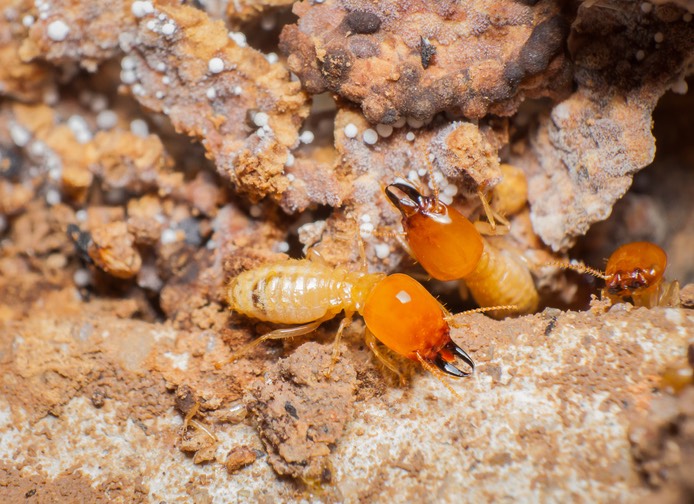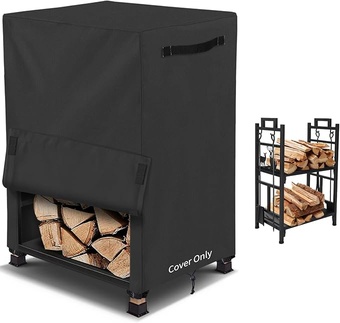Your Ultimate Guide to Termite Prevention This Spring

Is Your Home at Risk? Essential Spring Termite Prevention Tips to Avoid Infestation
Spring is just around the corner, and as temperatures begin to rise, termites in the DC, Maryland, and Virginia region are preparing for their most active season.
While often confused with flying ants, termites may be the winged insects you find around your foundations or on your window sills. But when we talk about “termite season,” we’re specifically referring to the months between late March and May when swarms are outwardly visible and termites emerge to reproduce and establish newer, stronger colonies.
Odds are, if you notice a termite swarm in your home or property, then there’s a high chance the initial nesting site or colony is not too far away. These tiny insects tunnel through wood and “eat away” at the structure of houses, which can weaken support beams – making your home or property more susceptible to collapse. With termite damage costing U.S. home and business owners over $5 billion annually in prevention and repairs, now is the perfect time to strengthen your home’s defenses against these pests.
To help answer all your questions regarding these flying and invasive bugs, the experts at American Pest have put together a comprehensive guide on how you can approach your termite prevention strategy this spring.
How to Identify Signs of Termite Damage
To find the right plan of attack, you must first assess whether your home has pre-existing termite damage.
What’s especially problematic about termites is that they are barely noticed until it’s too late. Unlike other bugs, termites can hide underground or inside your walls, going undetected for several months or even years.
A good indication of termite damage is if you find piles of discarded wings, buckled, weakened, or damaged wood, or even worse – swarms of insects on or near wooden structures in your home or property.
Mud tubes, a tunnel-looking highway that allow termite colonies to explore the the area undetected. Made from a mix of soil, wood, and termite saliva, mud-tubes are another tell-tale sign of a termite infestation. Pay attention to the surfaces of your home, especially wooden walls. If termites are feasting away on your wooden surfaces from the inside, your walls and floors might sound hollow or tend to creak.
Essential Spring Prevention Measures
There are several ways to prevent termites from becoming your much-too-close neighbors this spring. Our experts have outlined the following prevention techniques:
Step One: Eliminate moisture from your home
Effective termite prevention starts with controlling moisture around your home. Termites need water to survive and are drawn to damp and water-damaged wood. Repairing leaking faucets, water pipes, AC units, and dripping sinks can help eliminate moisture issues.
While you tend to humid areas in your home — such as the bathroom, kitchen, and basement — keep an eye out for shaded areas and gutters that are also prone to water build-up. Create outdoor drainage systems that lead away from your house, cut back foliage that causes too much shade, unclog jammed gutters, and consider sealing your crawl space to prevent termites from invading your home.
Step Two: Remove termite-infested plants
Your landscaping choices can also impact termite prevention. When planting garden beds, leave space between mulch or soil and your wood elements. If your first indication of termites was an infested tree, stump, or logs, be sure to remove dead tree stumps and roots that can make it all too easy for termites to make the jump to enter your home.
Step Three: Eliminate wood from surrounding areas of your home
Since termites tend to be drawn to cellulose—the plant fiber that gives wood its structure – you’ll want to avoid placing firewood directly onto the ground or against your home, as well as areas where there is direct wood to soil contact. Creating a physical barrier between wood and soil by maintaining at least a six-inch clearance will help prevent the swarmers from making their way into the crevices of your home.

It’s also best to store firewood, lumber, and other wooden materials away from your home’s foundation, and elevate them off the ground and at least 20 feet away from your home.
Here’s an example of a product you can purchase that keeps it off the ground –avoiding wood to soil contact. The waterproof-cover also keeps it dry which is important as wet wood is more conducive to termites.
Seek Professional Treatment
Termites aren’t pests that will just go away on their own. Once you’ve spotted signs of a termite infestation or swarmers in your home, be sure to consult a licensed professional to help you take action and eliminate termites immediately.
Depending on the extent of your termite infestation or termite prevention you’re planning to put into place, professional solutions can range from soil and barrier treatments to baiting stations. It’s important for your pest professional to explain the best treatment for your home depending on home location, type of foundation, and more.
At American Pest, we utilize the Sentricon® Termite Colony Elimination System, an ecologically responsible baiting method that contains an eliminating agent that attracts only termites. The termites that take the bait carry that same agent back to their colony, thus eventually eliminating the entire colony or swarm over time.
This system requires no liquid or drilling treatments and leaves no harmful or offensive odors behind. It successfully targets only termites to the station–making the system safe for any wildlife and pets that may come across the baiting station.
With continuous monitoring as part of our termite control services, American Pest guarantees the complete elimination of existing termites and the prevention of new colony invasions from forming. Contact us today to schedule your inspection and discover how we can help eliminate termites from your home this season.
Related Posts
Contact Us Today!
Do you need an estimate for service or have questions about pests? We’d love to hear from you!
Fill out the form and receive feedback today. For immediate service, please give us a call!
